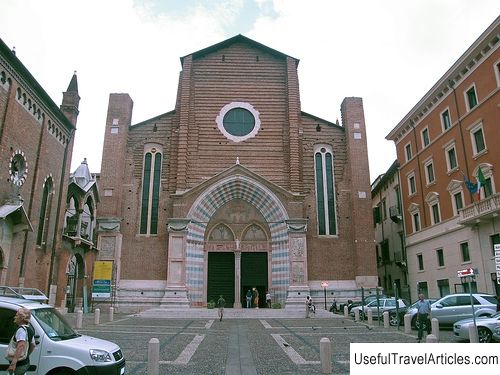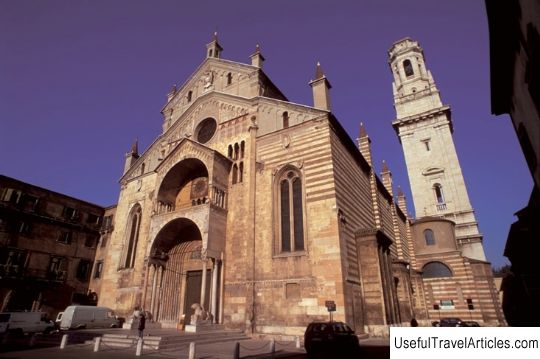Church of St. Anastasia in Italy, Verona resort
Rating: 7,7/10 (600 votes)  Santa Anastasia is the largest church in the city of Verona. The church was built on the site of an old temple dedicated to the same saint. The building was designed by two Dominican monks, Fra Nicolo da Imola and Fra Benvenuto da Bologna. The construction of the building was started in 1290, and finished only in 1481. Initially, the church was supposed to be dedicated to the holy martyr Peter, but the Veronese continued to call it after St. Anastasia. The temple has a high apse, to which a bell tower was attached, ending with a pointed thorn. The main facade of the temple remained unfinished. The portal of the temple is decorated with barilleffs made by Rigino di Enrico, on scenes from the New Testament, as well as the lives of the Apostle Peter and St. Anastasia. At the entrance to the basilica, there is a hanging sarcophagus, created in 1320. The basilica has three naves, separated by a colonnade of 12 columns made of red marble, supporting vaults decorated with floral designs. The two columns at the entrance were adorned with water-blessed bowls dating from the 16th century, which are supported by grotesque statues popularly known as the Hunchbacks of St. Anastasia. Laid out in 1462 mosaic marble floor in pink, white and blue-gray marble. In the right nave, you can see the altar of the Fregozo family, made in 1565 by Danese Cattaneo, the chapel of Vincent Ferreri, the altar of the Pendemonte family, the chapel of the Virgin Mary, the chapel of the Crucifixion, the altar of the Holy Rose, the chapel of Thomas Aquinas. The main altar of the temple is located in the transept. It is decorated with frescoes for episodes `` Annunciation '' and the Last Judgment. Also here is the tomb of Cortesi Serego, dated 1492. In addition to the main altar, the transept of the temple also includes: Chapel of Pellegrini, Chapel of Cavalia, Chapel of Salerni, Chapel of Lavagnoli. In the left nave there is Chapel del Rosario, built in the 16th century, altar of Miniscalca, chapel Faella, Chapel of Saint Raymond, altar of the Bolderi family, decorated with marble statues of Peter the Martyr. We also recommend reading State Museum of Natural History in Germany, Karlsruhe Spa Topic: Church of St. Anastasia in Italy, Verona resort. |




